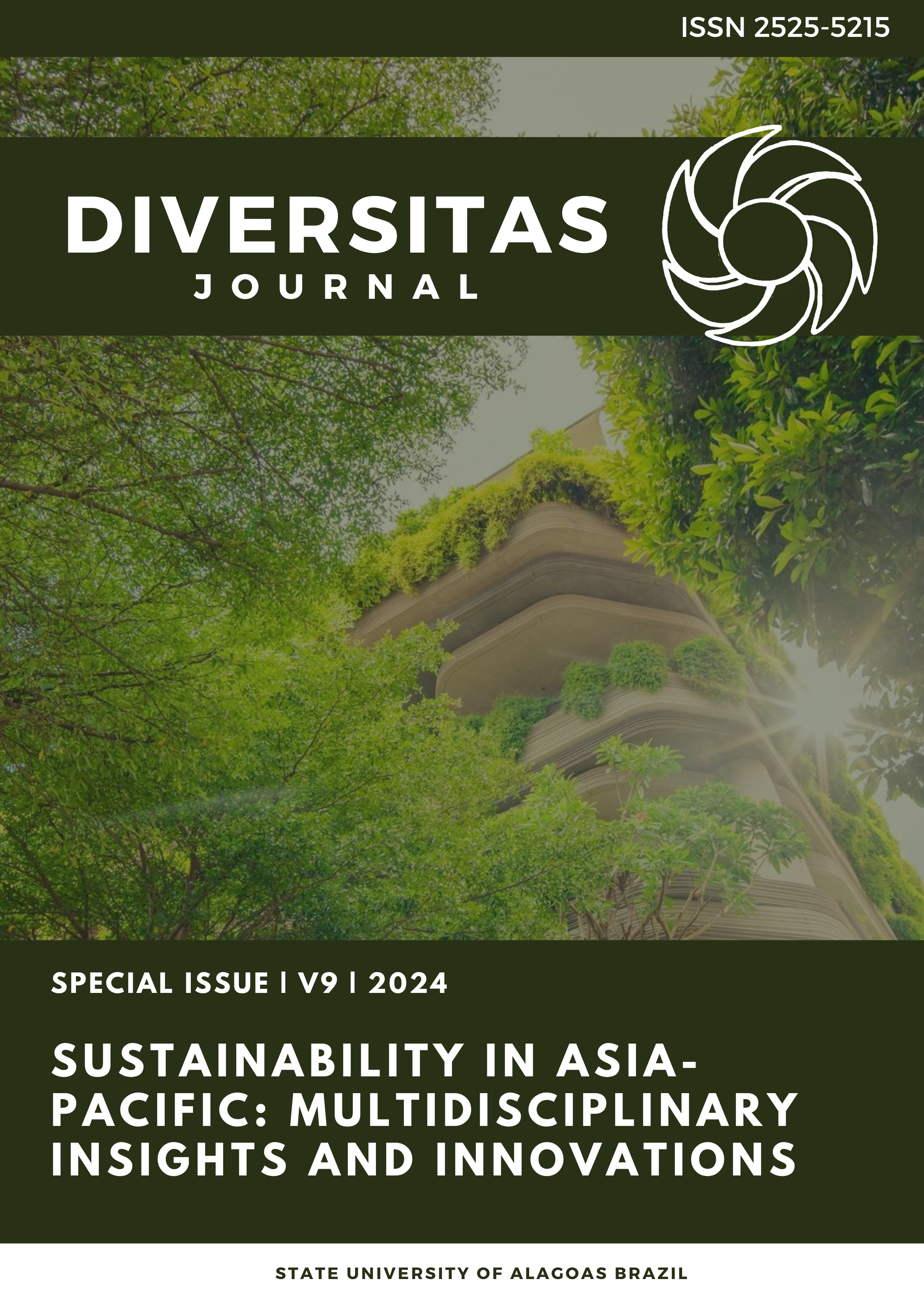Laying Performance and Hatchability Rate of True-To-Type Bolinao Native Chicken in ASIST Demo-Site Lagangilang, Abra
DOI:
https://doi.org/10.48017/dj.v9i1_Special.2877Keywords:
egg production, hen, rooster, condition, Abra, PangasinanAbstract
This study was conducted to evaluate the production performance between Abra and Bolinao, Pangasinan origin of True-to-type Bolinao native chicken under Abra State Institute of Sciences and Technology ASIST (demo-site) in Lagangilang, Abra. The study was conducted for eight months from August 2022-March 2023. The average monthly egg production ranges from 7-14 with a mean of 10.27 from group A (Abra origin), while 5-12 eggs per hen in group B (Bolinao origin) with a mean of 8.93, hen-house egg production (HHEP) is higher in group A (34.13%) compared to group B with 29.65%. The average egg mass is quietly higher also in group A (14.54%), compared to group B with 13.10%, however, a significant T-test (0.05)higher egg weight is observed in group B (44.10 grams), compared to group A (42.46 grams), while in feed conversion ratio (FCR), better efficiency is observed in group B (2.72)which is significant at 0.05 level, compared to group A (2.83). In terms of hatchability rate, group A performed better (47.83%), compared to group B with 41.01%, while the weight of chicks upon hatching observed an insignificant result between the two groups with a mean of 27.49grams in group A and 27.09grams in group B respectivelyMetrics
References
Aberra Melesse, Wodmeneh Esatu, Tadelle Dessie, & Tadelle Dessie. (2022). Production performance and egg quality evaluation of indigenous chickens across different agro-ecologies of Southern Ethiopia. Veterinary Integrative Sciences, 20(1), 133-145. https://www.researchgate.net/deref/https%3A%2F%2Fdoi.org%2F10.1080%2F26895293.2021.2024894
Al Tech. (2018). 15 management tips for better poultry performance. https://www.alltech.com/blog/15-management-tips-better-poultry-performance-potential
Brosas, A. (2022). Lists of Philippine Native Chicken Breeds. Sustainable Agriculture. Retrieved from: https://www.agraryo.com
Cabarles Jr, J. C. (2013). Production potentials of native chickens (Gallus gallus domesticus L.) of Western Visayas, Philippines. Trop Anim Health Prod, 45(2), 405-410. https://pubmed.ncbi.nlm.nih.gov/23011671/
Habte, M., Ameha, N., & Demeke, S. (2013). Production performance of local and exotic breeds of chicken at rural household level in Nole Kabba Woreda, Western Wollega, Ethiopia. African Journal of Agricultural Research, 8(11), 1014-1021. http://www.academicjournals.org/AJAR
Jacob, J. P., Wilson, H. R., Miles, R. D., Butcher, G. D., & Mather, F. B. (2018). Factors Affecting Egg Production in Backyard Chicken Flocks. Department of Animal Sciences, UF/IFAS Extension. https://edis.ifas.ufl.edu
Lambio, A. A. (2018). Native Chicken, Production and Management Practices in the Philippines. College of Agriculture and Food Science, University of the Philippines, Los Banos, Laguna, Philippines. ISBN 978-621-95678-6-0
Lopez, R., Lambio, A. L., Vega, R. S. A., & Pauline, A. (2014). Management practices of native chicken (Gallus gallus domesticus Linn.) production in Palawan, Philippines. Phillip J Vet Anim Sci, 40(2), 109–112. https://www.researchgate.net/publication/349548464_MANAGEMENT_PRACTICES_OF_NATIVE_CHICKEN_Gallus_gallus_domesticus_Linn_PRODUCTION_IN_PALAWAN_PHILIPPINES_MANAGEMENT_PRACTICES_OF_NATIVE_CHICKEN_Gallus_gallus_domesticus_Linn_PRODUCTION_IN_PALAWAN_PHILIP
Nour, M. A., El-Hindawy, M. M., Abou-Kassem, D. E., Ashour, E. A., Abd El-Hack, M. E., Mahgoub, S., Aboelenin, S. M., Soliman, M. M., El-Tarabily, K. A., & Abdel-Moneim, A. E. (2021). Productive performance, fertility and hatchability, blood indices and gut microbial load in laying quails as affected by two types of probiotic bacteria. Saudi J Biol Sci, 28(11), 6544–6555. https://doi.org/10.1016/j.sjbs.2021.07.030
Ogbu, O. C., & Oguike, M. A. (2019). Hatchability of Fertile Eggs in Poultry Industry. Journal of Agriculture and Sustainability, 12(1), 107-123. https://core.ac.uk/reader/229605480
Santiago, R. C. (2018). Native Chicken Farming. Agriculture Magazine, November 2018. Retrieved from: https://www.agriculture.com.ph/2018/11/21/native-chicken-farming/
Santiago, J. C. Q., Achuela, H. H., Batara, D. C. R., Gann, P. J. I., Vingua, E. C., Cacho, R. C. C., Agcaoili, M. J. T. T., Aguinaldo, R. S., Calventas, R. D. Q., Palafox, L. A. G., Balneg, B. B., & Calpito, M. C. H. (2021). Phenotypic and Molecular Diversity of Native Chicken Genetic Groups in the Philippines. Advances in Social Science, Education and Humanities Research, 630. https://www.atlantis-press.com/article/125968187.pdf
Sisay, F. (2015). Effects of feeding processed kidney bean meal (Phaseolus vulgaris) instead of soybean meal on qualities of eggs of white leghorn hens. International Journal of Agricultural Research, 4(3), 049-056. https://www.researchgate.net/publication/273886122_Effects_of_feeding_processed_kidney_bean_meal_Phaseolus_vulgaris_instead_of_soybean_meal_on_qualities_of_eggs_of_white_leghorn_hens
The Poultry Care. (2021). The Broiler and Layer Chicken Vaccination Schedule. https://poultry.care
Yan, G. (2020). Farming heritage chicken breeds of the Philippines. The Poultry Site. Retrieved from: https://www.thepoultrysite.com
Yizengaw, M., Kebede, E., & Getachew, A. (2022). Review of chicken productive and reproductive performance and its challenges in Ethiopia. All Life, 15(1). https://www.researchgate.net/deref/https%3A%2F%2Fdoi.org%2F10.1080%2F26895293.2021.2024894
Yousif, M. S. N. A. B. (2020). Comparative study of hatchability and fertility rate among local quails. The Iraqi Journal of Agricultural Sciences, 51(3), 746. https://www.researchgate.net/publication/349548464_MANAGEMENT_PRACTICES_OF_NATIVE_CHICKEN_Gallus_gallus_domesticus_Linn_PRODUCTION_IN_PALAWAN_PHILIPPINES_MANAGEMENT_PRACTICES_OF_NATIVE_CHICKEN_Gallus_gallus_domesticus_Linn_PRODUCTION_IN_PALAWAN_PHILIP
Downloads
Published
How to Cite
Issue
Section
License
Copyright (c) 2024 Dina B. Tadeo

This work is licensed under a Creative Commons Attribution 4.0 International License.
The Diversitas Journal expresses that the articles are the sole responsibility of the Authors, who are familiar with Brazilian and international legislation.
Articles are peer-reviewed and care should be taken to warn of the possible incidence of plagiarism. However, plagiarism is an indisputable action by the authors.
The violation of copyright is a crime, provided for in article 184 of the Brazilian Penal Code: “Art. 184 Violating copyright and related rights: Penalty - detention, from 3 (three) months to 1 (one) year, or fine. § 1 If the violation consists of total or partial reproduction, for the purpose of direct or indirect profit, by any means or process, of intellectual work, interpretation, performance or phonogram, without the express authorization of the author, the performer, the producer , as the case may be, or whoever represents them: Penalty - imprisonment, from 2 (two) to 4 (four) years, and a fine. ”


















